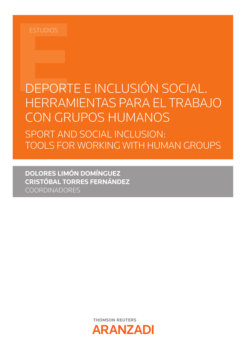Читать книгу Deporte e Inclusión Social. Herramientas para el trabajo con grupos humanos. Sport and Social Inclusion: Tools for working with human groups - Dolores Limón Domínguez - Страница 27
На сайте Литреса книга снята с продажи.
2.1. GO OUT WITH THE ELDERLY CAMPAIGN AS AN EXAMPLE OF MULTIDISCIPLINARY, LONG-TERM, MULTI-ORGANIZATIONAL AND MULTI-STAKEHOLDER COLLABORATION
ОглавлениеGo Out with the Elderly Campaign is a good example of the social inclusion of seniors through exercise and outdoor activities. Seniors can have a variety of physical limitations in their movement, which also affects the amount of outdoor activity. However, most can go outside, especially if help and support is available.
Go Out with the Elderly Campaign has provided a wide range of support and outdoor activities for seniors in various ways for ten years. The campaign has produced a wealth of support material and has also taken advantage of social media opportunities to attract outdoor friends and various organizations.
Indeed, the permanent construction of social inclusion requires long-term action in cooperation with various organizations. In this longrunning campaign, various connections and practices have been built for years, outdoor friends have been recruited and trained systematically, and campaign material has been produced innovatively. The action has evolved by doing and experimenting with learning.
The first introduces a model in which students in the last grade of primary school take the residents of a nearby service house outside. It is therefore very important that people of different generations and ages do things together. It breeds “generational Intelligence”, which is important in aging societies so that seniors do not become excluded from society. It is also important that the younger generations get to know the older population through doing things together. (Biggs & Lowenstein, 2011; Saarenheimo, 2014ab).
In another example, an outdoor friend is an elderly neighbor. There are many lonely elderly people in Finland whose families and relatives have either died or live far away from their loved ones. The tradition of informal neighbourhood assistance has also not been built in the fastgrowing big cities. That is why this campaign awakens new community and encourages neighbors to help each other under the wings of this campaign. The benefit can also be mutual, as the “helper gets” as well, as stated in the volunteer study (Yeung, 2005).
In the third example, we move and play outdoors with the power of four generations. The strong urbanization that took place in Finland from the 1950s to the 1980s separated large age groups (birth years 1945-1960) from their parents and grandparents, who were often hundreds of kilometers away in the countryside. It led to a long-term decline in the communality of different generations. In recent decades, even in big cities, three or even four generations of families live quite close to each other. The video uses the example of one family to show how to play outdoors between three generations. (Saarenheimo 2014ab; Pohjolainen & Tiihonen, 2015).
The fourth example is a rather typical solution of Finnish and Nordic society to social problems and, for example, the organization of sports, ie the activities of voluntary organizations in the third sector for the common good. In this case, the Go Out with the Elderly Campaign has partnered with the Lions Club. The campaign has trained Lions Club volunteers to be outdoor friends, who then take care of outdoor activities for the elderly. The importance of third sector organizations in Finland is very great in sports, youth activities, the social and health sectors, but also in the work of the elderly.
The Go Out with the Elderly Campaign is a ten-year-old form of activity, which is based on a multidisciplinary research and development activity and the Power for Aging action program https://www.voimaavanhuuteen.fi/en/), which was launched in 2005 (https://www.ikainstituutti.fi/in-english/) works in close co-operation with the Finnish gerontological research community, sports science and administration, both municipal applied sports and senior service house associations.
The Go Out with the Elderly Campaign is an excellent example of how different sectors of society and a wide range of actors are blowing one coal and creating nationwide volunteering that reaches a wide range of senior citizens in their own social contexts.
From the description of the study (below), it is good to point out that the number of participants in the campaign did not start to rise sharply until after the campaign had been implemented for about four years. Indeed, perseverance is often the most important factor in transforming interventions into permanent practices. An organization such as the Age Institute was able to continue its activities, even though the first years did not bring a clear increase in the number of participants.
The videos produced by the campaign give a good idea of how social inclusion works by involving family and family communities, school children and neighbors. In this way, seniors in a wide range of circumstances are found and the appropriate sports can be implemented into workable practices.
